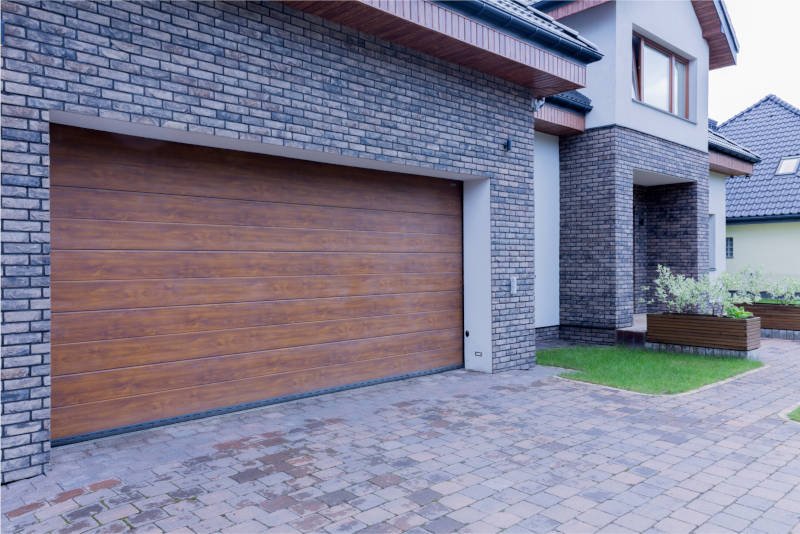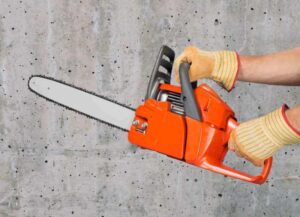From your vehicles to your tools, the garage provides necessary shelter from the harsh elements of the outside world. This shelter, however, can become an uncomfortable space when hot and cold air begins to slip its way in.
The most effective way to insulate a brick garage is with spray polyurethane foam. This process adds a foam barrier against the brick of the garage that protects from water or mold damage. A wooden frame is then built into the new foam layer and drywall is placed on top of it to complete the space.
Can you insulate a brick garage?
Before jumping into a garage insulation project, it is important to understand that a brick garage has a structure different from that of a traditional home. Most homes are built with the intention of being insulated which means that they have the infrastructure in place to easily support insulation. Brick garages, on the other hand, usually have no existing wooden frames that can hold loose fitting, blown in insulation (this is the type of material that is primarily used throughout the rest of a home). While this may make it seem as though it is impossible to insulate a brick garage, there are several methods that can be employed to properly install insulation and create a barrier between the inside and outside of the garage.
The other aspect of insulating a garage that you need to look into, is planning permission. Garages are rated under the National Construction Code (NCC) as a Class 10a structure, which means that you need to get development approval from your local council to turn it into a Class 1a habitable area. If the garage has a concrete ceiling less than 2.4 metres above the finished floor level – you probably will not be allowed to convert it.
Benefits of an insulated garage
As methods to make energy use more efficient and cut down on general home costs have become more popular, many people have begun to think about putting insulation in their garages. This add-on allows for the garage — an area whose comfort is usually dependent on the weather outside — to be more stable as a whole. Many garages have gaps and open spaces that are not protected by any sort of barrier which allows for the air outside of the home to come in. This creates an inconsistent climate that can make it difficult to use the garage for longer periods of time.
Along with this, the constantly changing state of the temperature in the garage can have a major impact on a household’s monthly energy bill. Because of this, insulation is a great way to prevent these problems while simultaneously transforming the garage from wasted space to another useful part of a home or property.
How do you insulate a brick garage inside
With other, non brick structures, there are two options: exterior insulation or interior insulation. When insulating from the exterior, there exists the benefits of greater structural durability and a solution that increases airtightness. However, the best option for a brick garage is interior insulation. This makes the most sense as it doesn’t cover up the brick itself on the outside of the garage (this ensures that the aesthetics of the structure are intact and that the brick facade is still able to be seen).
Due to the fact that the brick garage will most likely be insulated on the inside, the bricks that make up the facade on the outside will be exposed to harsh conditions such as cold temperatures or rain. This can cause problems such as a reduction in the drying potential of the structure. In order to prevent this specific issue from occurring and to make sure that the freeze-thaw potential of the building does not increase, proper exterior water control and shedding must be established. The exterior of the brick garage has to have an appropriate strategy or mechanism for water drainage so that moisture and wetness can not penetrate the interior insulation. If this is not possible to achieve, then it is not a good idea to insulate the brick garage.
How to insulate a brick garage
Insulation can be laid directly against brick after a wooden frame has been constructed against the interior of the brick garage, however, this is an ineffective way of insulating the area. When insulation is put directly onto brick, there is a high probability that condensation or moisture will leak through and hinder the quality of the insulator. This not only stops the insulation from being able to do its job, but also raises concerns of mold growth and other serious health hazards that can negatively affect the safety of those that will be using the space.
A brick garage can easily be insulated in the walls and ceiling of the space. Rigid foam board insulation is often utilized for this purpose to minimize the flow of hot or cold air from outside into the garage. This is a great way to have better control over the climate conditions of the area. Most people without a massive budget or specialised tools and skills opt to go for the other effective process of brick garage insulation which uses rigid board insulation. This type of insulation involves placing a rigid foam board directly against the brick on the interior and is then covered by drywall. This procedure is just as effective as the former, but is less costly and easier to implement in general.
Transform your garage into a comfortable space!
Insulating a brick garage is definitely necessary if you are attempting to make the space one that is comfortable and able to be used for a greater variety of purposes. Some believe that due to the natural insulating properties of brick that further insulation is something that is not needed, however, this is not true. While brick does have a higher R-value (the measurement used to determine insulation ratings) than other materials such as vinyl, it is still not enough to properly regulate the temperature of the space. This is why brick homes — and similarly brick garages — require insulation beyond that of what is naturally offered by the brick. Taking the steps to insulate your brick garage is a great way to further its value and create new possibilities for the space within it.
We hope you found this article useful, please let us know in the comments what kind of projects you have been up to! If you enjoyed this blog, check out some of our other articles such as ‘Can I use an Angle Grinder to Level Concrete‘ or ‘What Mask is Best for Glasses‘
We also have a range of quality diamond blades for sale specifically for precision cutting of concrete, brick and stone. Also check out our N95 Masks Australia that you should wear for any construction project.




